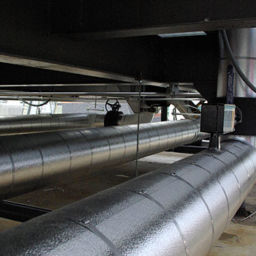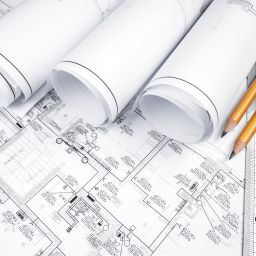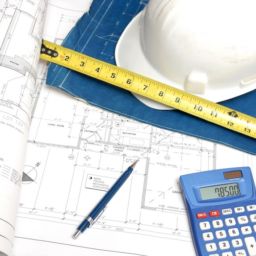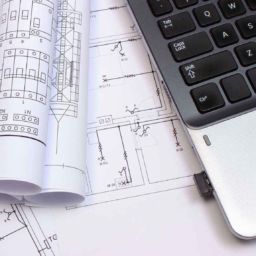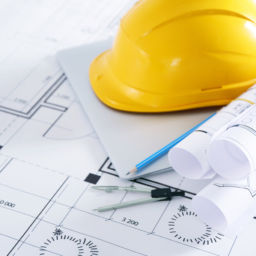To survive and grow in contracting, we need to find ways to gain an edge on our competition. Contractors need to ensure that the process of mechanical estimating they follow is almost flawless, any mistake can mean the difference between winning or losing a job, or even worse profit or loss.
Every job, no matter how small, must be estimated with a high level of accuracy and precision, with little to no room for errors. Mechanical estimators must use a strategic approach every time they do material takeoffs and mechanical estimating as a whole.
We know what a series of inaccurate estimations can do to a business. We often see contractors going out of business because they messed up at the tender stage, by being too optimistic with their bidding. I’ve even heard of companies going bust because of individuals within the M+E contractor accepting bribes for awarding projects to subbies with artificially inflated prices, leading the M+E contractor to make big losses on packages and over time leading to insolvency.
You do not just lose your business, but it puts your reputation and your business at stake once there is a supply chain that is out of pocket. Once your company becomes insolvent, it becomes all the more difficult to step back into the game as there will be less of a supply chain willing to serve you, not to mention the red flag on your credit report for all to see.
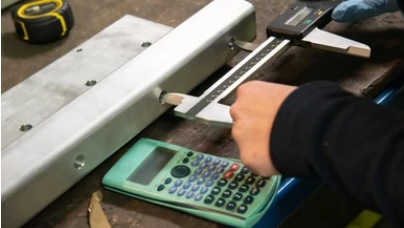
As contractors, you can either spend time perfecting your in-house mechanical estimating processes which could take years of painstaking work, or outsource estimating to freelance mechanical estimator services like Chase Estimating.
In this blog, we will discuss some of the processes that we follow here at Chase Estimating. Whilst we don’t claim them to be perfect, they have helped us over the years so if they can help you and your company avoid costly errors, that is a result for us.
Though I will be discussing mechanical estimating here, the points are equally applicable for insulation estimating, duct estimating, plumbing estimating and other building services estimating.
What is an estimate Mechanical Estimating?
An estimate is a probable cost that you will bid for the mechanical project. It is extremely subjective, but there may be a range that the majority of mechanical contractors will bid within. That is, what you might call the ‘Ballpark costs’. Having said that I’ve never liked the word ballpark costs, it implies a consensus on what the cost should be when there isn’t one. As I said, it’s extremely subjective.
It includes both the hard and soft costs of the job. It comprises the costs of the materials, equipment with consumables, labour, overhead costs, preliminary costs and of course, your profit margin.
What are the steps involved in Mechanical Estimating?
Mechanical Estimating includes the following strategical steps:
- Initial Assessment
- RFI & RFQ
- Takeoff & Bill of Quantities
- Pricing
- Reports with Supporting documents
Initial Assessment
The initial assessment involves reviewing and analysing the tender package provided with the job inquiry. Completing the initial assessment helps our mechanical estimators get a better understanding of the scope of work and the time required to complete the estimate.
The job inquiry usually, but not always, comes with a combination of the following:
- Invitation to tender (ITT)
- The Scope of Works (SOW)
- Construction Drawings
- General and Mechanical Specifications
- Equipment Schedules
Invitation to tender (ITT):
The ITT is simply a formal invitation to tender for a project either products, services or both.
The Scope of Works (SOW):
SOW should detail what services you are being asked to tender for, and in what capacity. Scope of works can be ambiguous, sometimes intentionally so. As per Designing Buildings Wiki –
‘The Association for Project Management describes ‘scope’ as ‘The totality of outputs, outcomes and benefits and the work required to produce them’ and ‘scope management as ‘The process whereby outputs, outcomes and benefits are identified, defined and controlled’.’
Construction Drawings:
The construction drawings are shared by the client along with the other documents such as the drawing register, sectional drawings, 3D models, isometric views etc if they are available.
A mechanical project will include different services and as such different drawings including – floor plans, structural drawings, beam and column details, mechanical layouts, electrical layouts, builders works, fire strategy layouts and others, will also be shared by the client if available.
Sometimes out of pure laziness, much to the frustration of the mechanical estimator, the main contractor will share literally ALL the drawings under the sun for every single trade such as electrical drawings, groundworks etc and expect the estimator to trawl through all of them looking for anything that is relevant to the mechanical package.
Suffice to say we advise our clients to either have a word with their client about this or ditch them altogether, as it shows a lack of respect in my mind and/or just plainly trying to leave all the risk and responsibility in the mechanical contractors hands to pick out every single detail that might be relevant to them from every other trades package.
The mechanical estimator will thoroughly check these drawings, as these are necessary to fulfil the quantity takeoff.
A word on Design and Build (D+B)
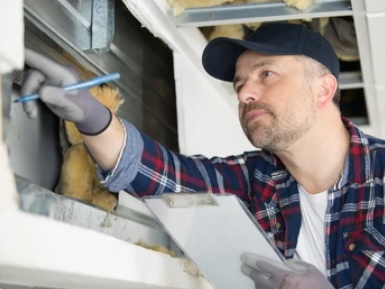
Whilst beyond the scope of this article, design and build tenders present a challenge for most estimators as they will literally show nothing in the way of routes and service sizes on drawings, not allowing for ductwork takeoff or pipe takeoff etc in the normal manner. Either an outline design needs to be developed or the estimator has to use his experience to ‘Sketch out’ the routes and guesstimate sizes.
At Chase Estimating we have a team of experienced mechanical estimators who can provisionally sketch out small works but for larger projects, we have to use our mechanical designers to develop a stage 2 – 3 design in order for our estimators to price from.
Usually, it depends on if the job is tender only or secured and how well our clients know theirs which ultimately decides how much capital they will invest upfront in design work. I will create another blog on D+B in the future.
Construction Specifications:
The Construction specification documents are an integral part of the construction contract. They include the detail of the work, materials, preferred manufacturers and installation standards and codes required to be used on the project.
It gives them an indication of the materials to use, desired quality level and installation.
Mechanical Estimators must analyse every little detail of the spec document thoroughly and cross reference them withdrawing notes, which often contradict each other and requires RFI to sort out which supersedes the other.
Making screenshots of the relevant points related to the scope of work will help mechanical estimators during the takeoffs by helping them select the correct materials and manufacturers and speed up the mechanical estimating process.
Equipment Schedule:
An equipment schedule is a list of the equipment and plant required to do the job. The schedule includes details on all types of equipment used for the job in one standard format. It gives detailed insights about the equipment, like the size, capacity and others.
It provides clarity on the type of equipment used for the job and speeds up the mechanical estimating process by allowing the material takeoff to be done quicker with less hesitation and RFI back and forth which leads us directly to….
RFI & RFQ
RFI: The Request for Information (RFI) involves seeking information for the part where the shared details might be vague or confusing. Mechanical Estimators use RFI to seek clarity on confusing or contradictory aspects in the specification document, drawings or other documentation that was submitted with the inquiry.
The RFI is sent to the source where the inquiry came from, which in most cases is the client. Our estimators start with the query and ask only for the information needed, in simple language always in writing, via email. We include screenshots or images to help the client understand the query and provide an appropriate response. You can find more details on RFI in my previous blog.
RFQ:
Request for quotations (RFQ) involve getting a price for mostly the materials or services from the vendor or subcontractor who deals with the specific item in question.
If it’s full M&E estimating that we are undertaking, you really cannot depend on just one supplier to quote for all your material and equipment needs. So, mechanical estimators prepare the RFQ by segregating the materials that need pricing that is not within the mechanical estimating software.
The mechanical estimator must include relevant information in the RFQ, such as the capacity, size, model, manufacturer quantity and other details that will help the supplier to easily identify the materials needed.
When the RFQ is simple and to the point, the suppliers have clarity on what is required of them, and we will get the material quotes faster. Getting material cost quotes can be a real ordeal at times so making it easier on the supplier can increase your chances of receiving it quicker.
A couple of pointers while doing the RFQs include:
- Send the RFQs to 2 or 3 alternate suppliers. It will not only save time but will also help determine the most competitive quote.
- Send RFQs to suppliers and subcontractors closer to the job site. It could help you get better prices and more affordable delivery charges.
- We store the supplier details and rates in our cloud-based database. It ensures that our mechanical estimating team does not send the same RFQs to the same supplier. It also saves time, avoids confusion and enables different user accessibility.
- We also have a subcontractor directory that we reach out to when necessary such as when our client does not have a contact for a particular service for example, a ventilation contractor.
Takeoff & Bill of Quantities Mechanical Estimating
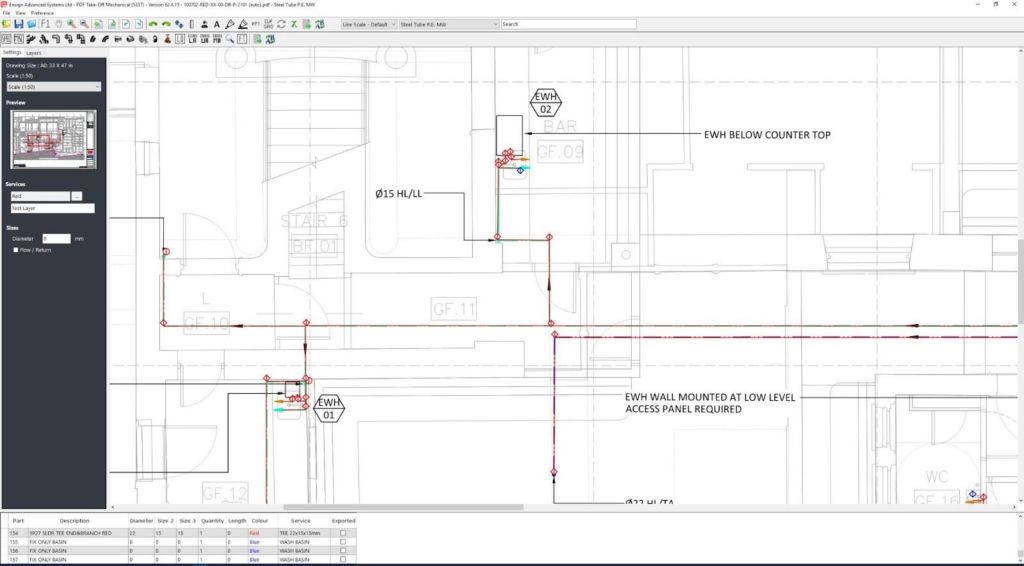
This is the most time consuming part of mechanical estimating. Everything that undergoes pricing is based on the quantity takeoff data. Basically, takeoffs are a quantification of the individual components in a mechanical system or a set of mechanical services such as say, how many linear metres there are of 15mm Copper Pipework or how many FCUs there are on the job.
In order to maintain the quality of the quantity takeoff, we always start with 1 service at a time and keep working on the continuation.
Jumping around will mean the mechanical estimator will lose the continuity and miss the items in between. The process of mechanical takeoff will lose efficiency and the estimator will waste precious time. Mechanical estimators can make fast wins by taking off the easy sections first and then doing the difficult ones. This will allow them to get a lay of the land and a good overview of the job in general.
A few key pointers here:
- Always keep the Scope of work in the background throughout your takeoff. Sticky notes on your computer screen is one way, or just keep open a notepad on your desktop.
- Make a note of the excluded parts or services in a notepad file, preferably a cloud based one like Google Docs so you will not lose any data if your computer crashes.
- Make a note of the necessary points on that drawing page itself.
- In the course of mechanical estimating, there may be assumptions that need to be made like including non-allowance services. Make a note of these assumptions as well.
- Drawing errors must also be noted.
These notes will help both reviewers and clients know why changes have been made on a particular point.
Using mechanical takeoff software is absolutely necessary in this day and age in my opinion. Mechanical estimating software usually includes features like measuring, counting, linear takeoff, scaling, highlighting, and printing of the takeoff drawing.
At Chase Estimating, we use Ensign mechanical estimating software to help us produce accurate construction takeoff. Click here to find out more and how we can secure you discounted, commercial rates which are exclusive to us only.
The following process is involved while using takeoff software for mechanical estimating.
Set Scale:
The first step is to set the accurate scale. It is found on the title page in the drawings. We determine the scale by measuring any two or three values which have a pre-written measurement or measurement of known items, like a door, a wall etc.
Separate the Allowances according to Scope of works:
Estimators need to determine how to separate the service allowances – floor-wise OR building-wise. This should be queried before the quantity takeoff begins. The services need to be allowed as per the Scope of Work (SOW) or the pricing schedule that is sent within tender packages. The services that are not a part of the scope should be excluded. Make a note of these within the takeoff.
Notes and highlighting:
Mechanical estimators must note and highlight parts with conflict, excluded bits, parts where assumptions have been made and the parts allowed within the drawing. We use different colours to show the approved services, non-allowances, and ambiguous and conflicting parts. This practice will help those reviewing the mechanical estimations.
Linear takeoff:

It is used to measure the linear length. This is useful for pipe takeoff, ductwork takeoff, cables etc. Almost all takeoff software supports the calculations made within the linear takeoff properties.
This feature is helpful to produce the other calculated parameters such as area, average, discounted values and others. It is an elementary feature that even a rookie freelance mechanical estimator can accomplish with basic math skills.
With some upfront effort, even things like flow rate calculations are built-in.
Assemblies:
Assemblies are the amalgamation of the different components needed to complete the installation of a service. For example, to install ductwork you don’t just need the duct, you need hangers, rods, square plates, unistrut, nuts etc. What an assembly does is work out the labour and material cost for each component, right down to the last nut and washer. They are then added together to give composite labour and material takeoff of all the components added together. This will happen automatically as we make linear takeoffs
Counting:
Counting is the process of quantifying materials such as fittings, equipment, valves etc by setting conditions at the beginning. Similar materials are counted in the same series.
Newer mechanical and electrical estimating software nowadays has the amazing feature of auto counting, which once trained, will auto count items such as fan coil units, luminaires etc
Bill of Quantities Preparation:
The bill of quantities or BOQ is the spreadsheet which shows each component of the job, quantified and priced. It is the product of all the quantity takeoff that has been done on the job.
It is helpful to separate all the information based on services and scope of work.
There are multiple ways to prepare a bill of quantities.
- Export directly from the Takeoff Software, usually unpriced.
- Export directly from the Mechanical Estimation software, usually priced
- Custom made bill of quantities with manual input data
- Automated bill of quantities with Takeoff/Estimation software reports as input
No matter what method you use to prepare the bill of quantities, it must be done with accuracy, and within the timeline. It’s good practice for the bill of quantities file to include the scope of works and takeoff notes. We like to make it as easy and intuitive for our clients as possible.
Pricing

The mechanical estimator should be focused and undistracted whilst doing the pricing aspect of the bid. They must be sure to include all the costs for materials, labour, overhead, prelims, and profit. This is the part where there can be a lot of pressure to make sure you get it right, as wrong inputs could have dire consequences for the bid or the mechanical contractor.
An estimator should have decent math skills and a keen eye for details and mistakes to produce an accurate mechanical estimation.
Using good quality mechanical estimating software such as Ensign, equipped with the necessary features for pricing can help track the price increases easily automatically. No longer will you have to manually update your material costs, making sure you have accounted for price increases that may have come into effect on the very same day you are sending your tender off.
The material price increases that may come into force whilst the job is in progress usually months down the line should be accounted for. Speak with your suppliers and ask them for cost increases that may come into effect.
Mechanical estimators must also be aware of special client requests such as below line costs and alternative cost options. The estimators must format the bill of quantities to accommodate these requests of the client.
Reports with Supporting documents
The final report that we submit to our clients includes the following documents:
Priced/unpriced Bill of Quantities:
The BOQ includes the complete list of materials and services, along with the prices (if required) like labour hours, overheads, prelims and profits.
The bill of quantities is kept separate from the summary, as including the whole list of materials in separate tabs helps the reviewer get the required information easily.
Highlighted takeoff drawing:
It is basically showing the allowances made on the whole job. The drawings are also highlighted with the non-allowance, important notes and other critical data.
We use different highlighting colours to help clients better understand the allowances, non-allowances and conflicts. We ensure the best visual experience, by having all takeoff legends visible and making the counter sizes convenient.
Specification schedule:
An important document that elucidates the scope of work as per our understanding with details of services allowed, the considerations and assumptions that the mechanical estimator has made during the course of the tender and the important specifications which influence the job.
We believe in putting things front and centre for our clients to see exactly what we have allowed for and exactly what we have not allowed for.
In conclusion.
We know how critical it is to get a mechanical estimate right. An experienced freelance
with on-site experience will be able to improvise by thinking from their client’s point of view during install. That is exactly what we do at Chase estimating. Our years of experience in the field, enable us to visualise what the project will look like in real life, not just on paper.
We also have a team of designers who can help with the following
- M&E Design
- Mechanical Design
- Plumbing Design
- Pipework Design
- Ductwork Design
We will go out of our way to give you the most accurate mechanical estimate we possibly can and help you win the bid. We have decent turnaround times, but will never compromise on quality for speed.
For all your mechanical estimation and mechanical insulation estimating needs, Chase Estimating will offer you the support you need. Send us requests at enquiries@chaseestimating.com or call us on 01630 417161 and we will be happy to help you.




